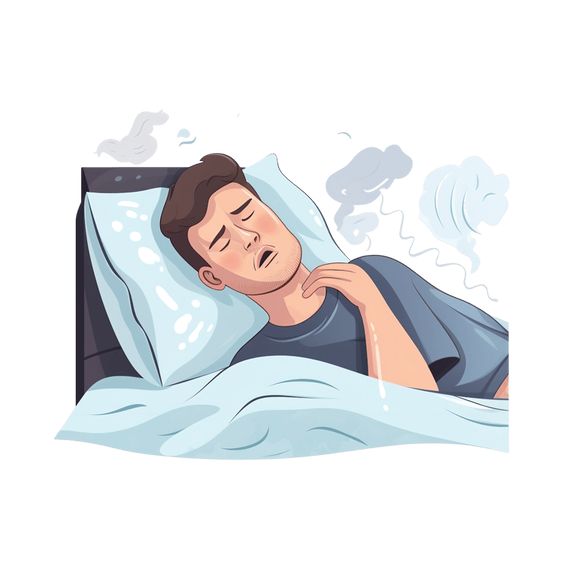
If you've been experiencing pain in your lower right abdomen accompanied by fever or nausea, you could have appendicitis. Appendicitis is dangerous because it can rupture and cause sepsis if left untreated. Knowing the signs and symptoms of appendicitis can help you assess whether you or a loved one needs emergency care.
Appendicitis and Its Symptoms
Appendicitis occurs when your appendix, the long tube of tissue connected to your large intestine, becomes inflamed and filled with pus. If you have appendicitis, you must receive treatment so your appendix doesn’t rupture and cause complications.
According to the Cleveland Clinic, some common signs of appendicitis include:
- Abdominal pain in mid-abdomen
- Abdominal pain in the lower right abdomen
- Fever
- Nausea
- Appetite loss
- Swollen belly
- Diarrhea
- Constipation
- General sense of being unwell
- Needing to urinate more often
If you’re experiencing these symptoms and in severe pain, consider going to your nearest emergency room for treatment. Time is urgent when appendicitis pain first appears. The sooner you seek treatment, the less likely severe problems -such as an appendix rupture- will occur.
What Causes Appendicitis?
Because several factors can contribute to the onset of appendicitis, it may be hard for some individuals to assess the cause of their appendicitis.
The National Institute of Diabetes and Digestive and Kidney Diseases lists that possible causes of appendicitis include:
- Inflammatory bowel disease
- Growths or hardened stools that can block the opening of the appendix
- Infections in the digestive tract or other areas of the body that cause enlarged tissue in the appendix wall
Bowel problems may indicate appendicitis, even if no other presenting symptoms exist.
Diagnosis of Appendicitis
If you think you might have appendicitis, getting checked out in the emergency room is often necessary due to the critical nature of the condition. Testing for appendicitis may involve several steps, including gathering a background of your symptoms and performing a physical exam.
A physical exam may include:
- the medical professional applying pressure to your right hip while extending your thigh
- the provider pressing on parts of your abdomen
- the provider pressing on your right knee as you extend your leg
You may also have to go through several types of tests. Some common types of tests for appendicitis include:
- Blood tests to determine if an infection is present or causing the inflammation
- Urine tests to rule out other diseases and conditions
- Imaging tests such as a CT Scan, MRI, or ultrasound to determine if your appendix looks normal
Imaging tests can help diagnose appendicitis quickly so you can start receiving treatment.
Treatment of Appendicitis
Treatment of appendicitis usually involves surgery as soon as possible to remove the appendix and prevent possible rupture. The surgery is called appendectomy and can be done laparoscopically. If there aren’t complications, most people can go home the same day. If there are complications during appendectomy, you may have to have open abdominal surgery to help manage the difficulties.
In some milder cases of appendicitis, a healthcare provider may prescribe antibiotics and wait to see if your symptoms resolve without surgery. Antibiotics alone aren’t a common option, as appendicitis can return if you don’t have your appendix removed. Antibiotics may help alleviate pain and reduce symptoms, and they're often prescribed before surgery.
If you have appendicitis, you must receive care quickly, as a ruptured appendix can occur within 36 hours of your first symptoms. Leaving appendicitis untreated can be extremely dangerous and deadly.
One potential complication of appendicitis is your appendix bursting; if this occurs, it can cause an infection in your stomach called peritonitis. Peritonitis can be fatal if left untreated.
Overview
Appendicitis occurs when your appendix becomes inflamed. The main sign of appendicitis is abdominal pain in your lower right abdomen. There are many potential causes of appendicitis, but there isn’t much evidence to support one cause.
If you believe you have appendicitis and want to be tested. In that case, you may be asked for a report of your symptoms, undergo a physical exam, and complete a variety of blood, urine, or imaging tests. These tests can help rule out other conditions and quickly identify problems with your appendix so that you can receive proper treatment.
Resource Links
- “Appendicitis” via Cleveland Clinic
- “Symptoms and Causes of Appendicitis” via National Institute of Diabetes and Digestive and Kidney Diseases
- “Appendicitis Tests” via Medline Plus
- “Appendicitis Test” via Cleveland Clinic
- “Appendicitis” via Johns Hopkins Medicine






